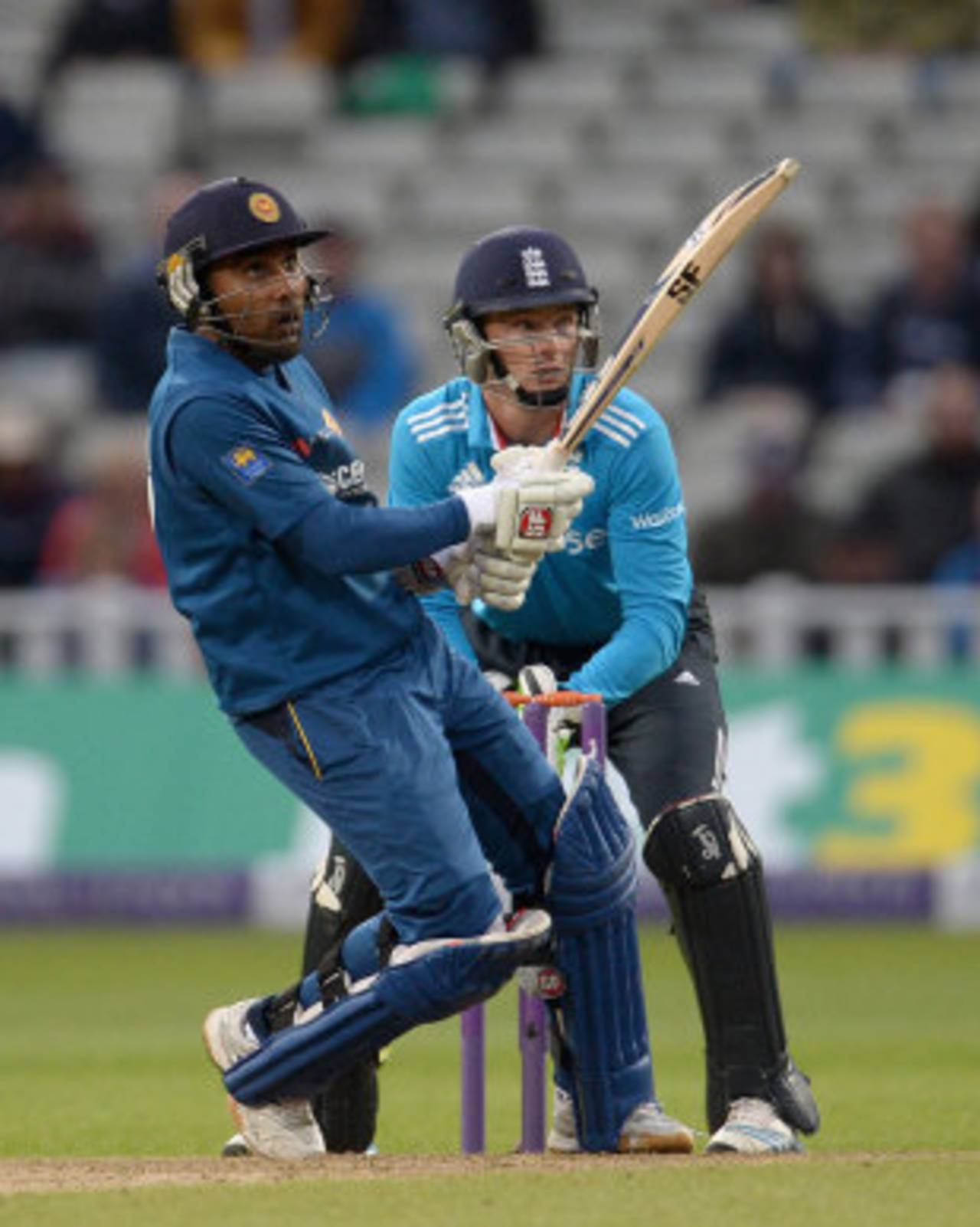20 wins from 23 limited-overs matches. When Sri Lanka lost the ODI series to Pakistan in December last year, few may have envisioned such a rich start to 2014.
The win percentage of 87 may be somewhat blown out by results against a misfiring Bangladesh and two more victories against Associate sides, but Sri Lanka have wrestled through the tougher challenges as well. The spoils of the series win against England - significant because it came in early summer - will now join the regional and global titles already on display at Maitland Place.
There can only be minor complaints about Sri Lanka's ODI side, but in the months approaching a World Cup, even the grains of sand that can set entire limited-overs machine out of kilter, deserve thorough examination. Sri Lanka owe it to their soon-to-be-departing seniors to have the best possible combination figured out, and their strategy fine-tuned, before heading into the event. Their fire has carried them through global tournaments before, but too often it has not been enough to topple surging, collected opponents near the tournament's climax.
Sri Lanka's most conspicuous area of concern is the second openers' position. Tillakaratne Dilshan finished comfortably atop the run-scorers' list for the series, yet no Sri Lanka opening stand lasted longer than nine overs. Between them,
Lahiru Thirimanne and Kusal Perera managed only 55 when opening, across the five matches.
Thirimanne and Kusal remain the frontrunners to partner Dilshan in Australia and New Zealand, but each of them present significant weaknesses. Thirimanne had been a revelation during the Asia Cup, but has yet to open convincingly outside Asia. James Anderson exposed a weakness outside off stump that plagues many young Sri Lanka batsmen, and though drop-in pitches in the Antipodes will offer less movement than the pitches he has played on in England, a left-handed opener who is shaky against away-swing does not provide much confidence in the age of two new balls.
Kusal's battles have been more universal. Explosive opening blows often suggest he has already come to terms with conditions and the bowling, but too often, he plays an aggressive stroke too many, to hand his wicket away. The power and panache in his cricket may resemble the virtues of Sanath Jayasuriya, but Kusal is yet to develop the judgement and self-awareness that sustained Jayasuriya's barrages. Kusal's rate of scoring means Sri Lanka take a significant leap in the match, every time he bats more than 12 overs, but he has not done so consistently against top opposition.
Sri Lanka have a third potential opener in their ranks, and on the surface, he may appear their best bet.
Mahela Jayawardene averages 44.76 when he opens the innings, and he strikes at better than 90 per hundred balls. Not only is that an excellent opening average, it is 10 runs higher than he manages at his usual haunt at No. 4. Those figures worsen only slightly, when his 11 opening innings in Australia are considered. Sometimes shackled by responsibility in the middle order, the Jayawardene at the top of the innings is free, fluent and often effective. As Dilshan slows down year-by-year, Jayawardene may be an ideal opening foil. The two have batted profitably together before.
It would seem straightforward to open with the experienced men, and move Thirimanne and Kusal to Nos. 4 and 5, where they have batted before, but Sri Lanka are wary of top-loading their experience. If Dilshan, Jayawardene and Sangakkara depart early on a rough pitch, it is left to the relatively green middle order to stabilise the innings. Thirimanne has showed himself capable of playing long innings, but the remaining middle order men have not yet mastered the art of reassessing targets and shepherding chases. Angelo Mathews is an increasingly canny finisher, but has rarely been effective when he arrives at the crease early in the innings.
Other options include balancing the top order by moving Kumar Sangakkara to No. 4, and having Thirimanne bat at No. 3 - his favoured spot. But the selectors' hesitation to make that move is understandable. Sangakkara has been Sri Lanka's best batsman in the past 18 months, so why have him change? The same forces that compel Jayawardene to restrict his game at No. 4 may end up applying to Sangakkara as well.
Sri Lanka have plenty to ponder lower down too. Chief selector Sanath Jayasuriya has spoken of the value a fast-bowling allrounder like Thisara Perera can add in Australia, but in England, he was omitted in favour of batsman Ashan Priyanjan. The attack remained potent. Priyanjan has been promising so far, and if he plays at No. 7, Sri Lanka have more scope to make aggressive changes in the top order. Experimentation in upcoming home series against South Africa and Pakistan may help illustrate both players' strengths and weaknesses more clearly.
During their 2014 run, Sri Lanka have been bailed out by their attack on numerous occasions. They can be confident they have the batting raw materials to launch a fine World Cup campaign, but a little polishing and repositioning in the coming series may make a considerable difference in eight months' time.
Andrew Fidel Fernando is ESPNcricinfo's Sri Lanka correspondent. @andrewffernando
